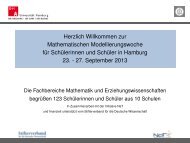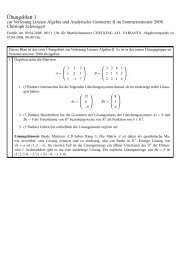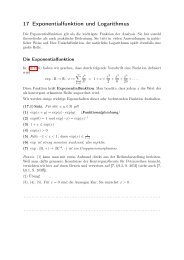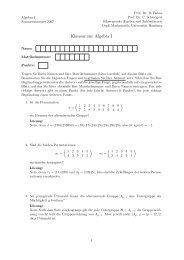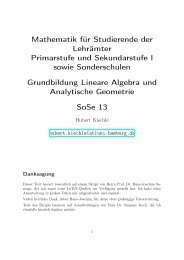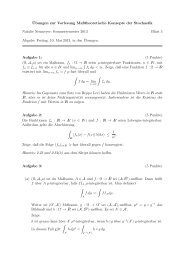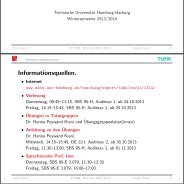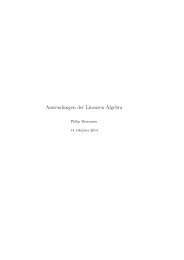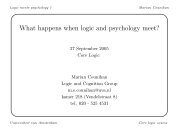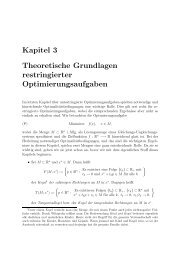pdf file
pdf file
pdf file
You also want an ePaper? Increase the reach of your titles
YUMPU automatically turns print PDFs into web optimized ePapers that Google loves.
In the third identity, we used the result of 2. for the positive curl. We leave it to the<br />
reader to show invariance under the Reidemeister move Ω ±1<br />
3 .<br />
✷<br />
Definition 5.3.6<br />
Let L be a framed link. Choose any link diagram D representing L. Then the bracket polynomial<br />
of L is defined by<br />
〈L〉(a) =<br />
〈D〉(a)<br />
−a 2 − a . −2<br />
This is a Laurent polynomial in a. This function of a is an isotopy invariant of the link L.<br />
Examples 5.3.7.<br />
1. It is obvious that the unknot with trivial framing has bracket polynomial 〈L〉(a) = 1.<br />
2. We obtain for the Hopf link:<br />
〈 〉(a) = a N<br />
+ a−1<br />
N<br />
= a(−a +3 ) + a −1 (−a −3 ) = −a 4 + a −4<br />
1<br />
with N := . Here we used the results for the positive and negative curl obtained<br />
−(a 2 +a −2 )<br />
in the proof of theorem 5.3.5.<br />
3. We obtain for the trefoil knot:<br />
〈 〉(a) = a N<br />
+ a−1<br />
N<br />
= a(−a +4 − a −4 ) + a −1 (a −3 ) 2<br />
= −a 5 − a −3 + a −7<br />
Here we used in the second equality the results for the Hopf link and the curls. We remark<br />
that the invariant of the trefoil knot and of its mirror are different. We conclude that the<br />
trefoil knot is not isotopic to its mirror (and not isotopic to the unknot).<br />
In passing, we mention:<br />
Definition 5.3.8<br />
129




